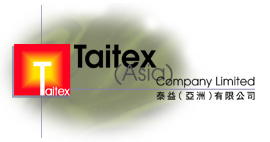

| Textile Introduction | Textile Articles | Textile Q & A | Textile Products |
|
|
For the washing temperature, low temperature is better than high temperature. Don't use any temperature higher than 50C. This is because the higher the temperature, the more likely the dyes dissolved in the washing water will stain the whole garment or fabric. Furthermore, we found that the results of
adding 0.5 g/l non-ionic detergent together with the chelating
& dispersing agent is better than that of using the chelating
& dispersing alone. This is because non-ionic detergent has
very good emulsifying and cleaning properties but low penetrating
properties. This further To reduce backstaining even further, a large amount of cool water should be used to rinse the fibres quickly a few times before washing. The short cool rinse provides no condition and media for the dissolved dyes to stain the fabric and part of the dissolved or excess dyes will be removed. In this way, there will be a lower concentration of excess dyes remaining in the fibre to be carried to the washing stage. Any comments or queries you have on the above would be welcome . Look forward to receiving your views. Thank you. |
|
|